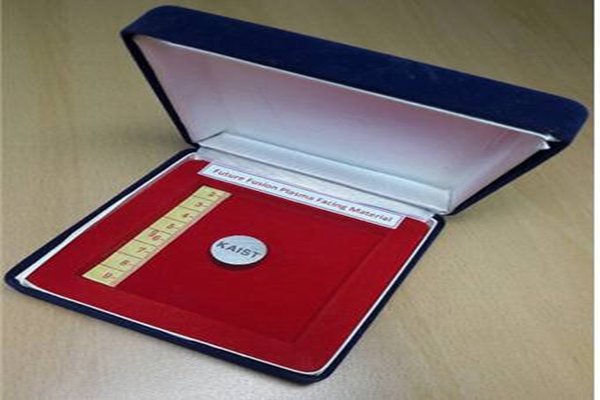Korea Advanced Institute of Science & Technology (KAIST, Chancellor Shin Sung-chul) has developed alloy technology with high strength and hardness that can be used for nuclear fusion plasma container by mixing many elements together. It is expected that it can be widely used even in extreme environment such as nuclear fusion power.
KAIST announced on the 24th that a research team led by Professor Ryu Ho-jin of Nuclear Energy and Quantum Engineering Department has developed PFM (Plasma-Facing Material) alloy technology that can be used for ‘Tokamak’, which is nuclear fusion device.
Tokamak plays a role of maintaining plasma at super-hot temperature through a powerful magnetic field. It is a must to apply high-strength material as temperature of plasma surpasses 100 million Celsius. Currently it is impossible to prevent containers from getting damaged through tungsten material that is being used as PFM because ions and neutrons that are released from plasma collide with PFM at high speed. Thermal load that occurs from a process of maintaining plasma can also have negative impact on durability of PFM. Although there had been researches to improve durability by adding small amount of metals to tungsten, they were not successful.
Research team has succeeded in developing a new material that renews durability through a technology that mixes many metals at the same time. It mixed much metallic powder just like making a cocktail and used ‘power metallurgy sintering’ technology that makes a lump at high temperature. It used metals such as tungsten, tantalum, titanium, chromium, and vanadium.

This alloy has superior performance in many areas than pure tungsten. First of all, its strength and hardness are twice higher than strength and hardness of tungsten. Strength in high temperature and fracture toughness of this alloy has also been improved evenly. It displayed tamper resistant effect against outer impact as elements with different sizes are mixed within this alloy crystal.
There are many other favorable effects through this alloy. Metals that play important roles are chromium and titanium. Not only do they improve strength and hardness but they also prevent ‘activation (phenomena where certain elements become radioactive as they go through a process of nuclear fusion)’. Chromium and titanium are metals that are hard to become activated. Temperature that is needed to make an alloy has also been lowered. While sintering temperature of more than 2,000°C is needed for tungsten, sintering of this alloy only requires about 1,600°C.
Research team explained that this technology can be applied to variety of scientific technologies. Technology that can increase strength and hardness through alloy can be used for variety of industries, national defense, and aerospace. Its characteristic of low activation will be used for nuclear energy field.
“Because damage is severe for nuclear fusion plasma PFM due to super-hot temperature and powerful impact, it is difficult to find metals that can withstand these.” said Professor Ryu. “However it is possible now to develop metals with low activation for nuclear fusion and nuclear energy purposes through our research.”
Staff Reporter Kim, Youngjoon | kyj85@etnews.com